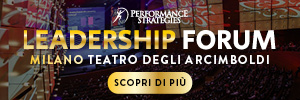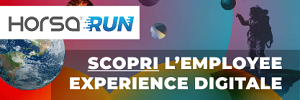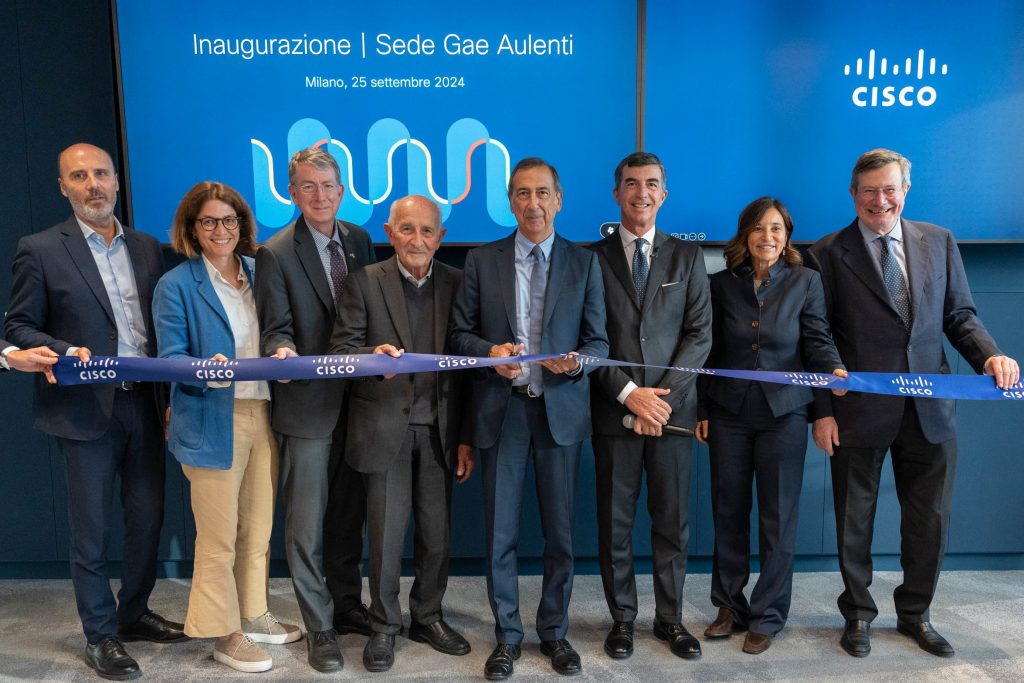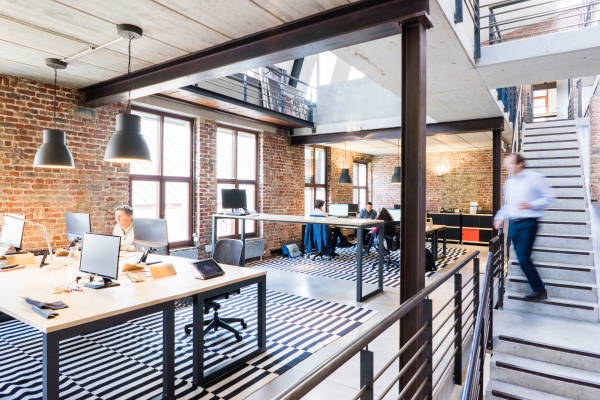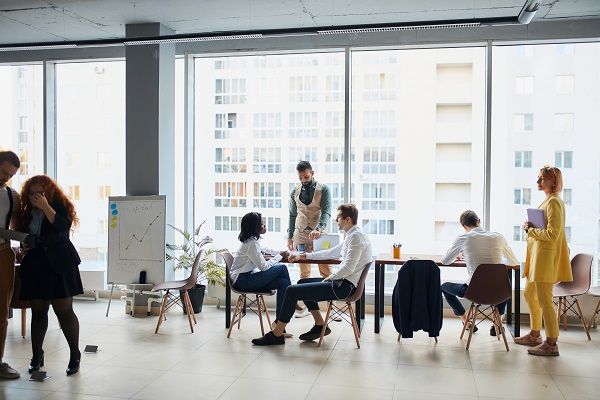
Gli spazi di lavoro negli hub creativi. Una ricerca esplorativa: la bibliografia
Pubblichiamo di seguito la bibliografia completa dell’articolo Gli spazi di lavoro negli hub creativi. Una ricerca esplorativa scritto da Anna Chiara Scapolan, Fabrizio Montanari, Ludovica Leone, Damiano Razzoli, Matteo Rinaldini e Stefano Rodighiero sul numero di gennaio-febbraio 2020 di Sviluppo&Organizzazione.
Andreotti A. (2018), La ridefinizione degli spazi e dei luoghi del lavoro: il caso dei coworking, in Nuvolati G. (a cura di), Sviluppo urbano e politiche per la qualità della vita, Firenze university press, Firenze, 65-80.
Ashkanasy N. M., Ayoko O. B., Jehn K. A. (2014), Understanding the physical environment of work and employee behavior: an affective events perspective, Journal of organizational behavior, 35 (8), 1169-1184.
Ashkenas R., Ulrich D., Jick T., Kerr S. (2015), The boundaryless organization: breaking the chains of organizational structure, John Wiley & Sons, Chichester.
Capdevila I. (2019), Joining a collaborative space: is it really a better place to work?, Journal of business strategy, 40 (2), 14-21.
Carlile P. R., Nicolini D., Langley A., Tsoukas H. (2013), How matter matters: objects, artifacts, and materiality, Organization studies, Oxford University Press, Oxford.
Cartel M., Boxenbaum E., Aggeri F. (2019), Just for fun! How experimental spaces stimulate innovation in institutionalized fields, Organization studies 40 (1), 65-92.
Cnossen B., Bencherki N. (2019), The role of space in the emergence and endurance of organizing: how independent workers and material assemblages constitute organizations, Human Relations, 72 (6), 1057-1080.
Congdon C., Flynn D., Redman M. (2014), Balancing “we” and “me”, Harvard business review, 92 (10), 50-57.
Corbin J. M., Strauss A. L. (1990), Grounded theory research: procedures, canons, and evaluative criteria, Qualitative Sociology, 13 (1), 3-21.
Davis M. C., Leach D. J., Clegg C. W. (2011), The physical environment of the office: contemporary and emerging issues, in Hodgkinson G. P., Ford J. K. (a cura di), International review of industrial and organizational psychology, John Wiley & Sons, Chichester, Vol. 26, 193-235.
De Croon E., Sluiter J., Kuijer P. P., Frings-Dresen M. (2005), The effect of office concepts on worker health and performance: a systematic review of the literature, Ergonomics, 48, 119-134.
DeGuzman G. V., Tang A. I. (2011), Working in the “unoffice”, Night owls press, San Francisco.
De Molli F. (2019), An aesthetic account of space: a report on recent developments, Organizational research, 38-63.
Dul J., Ceylan C. (2014), The impact of a creativity‐supporting work environment on a firm’s product innovation performance, Journal of product innovation management, 31(6), 1254-1267.
Eisenhardt K. M. (1989), Building theories from case study research, Academy of management review, 14 (4), 532-550.
Fortezza F., Berdicchia D., Masino G., Moriconi G. (2016), Spazi di coworking e fattori abilitanti al marketing nelle Pmi, Impresa Progetto – Electronic Journal of Management, 1-21.
Furnari S. (2014), Interstitial spaces: Microinteraction settings and the genesis of new practices between institutional fields, Academy of Management Review, 39 (4), 439-462.
Howells J. (2006), Intermediation and the role of intermediaries in innovation, Research Policy, 35 (5), 715-728.
Irving G. L., Ayoko O. B., Ashkanasy N. M. (2019), Collaboration, physical proximity and serendipitous encounters: avoiding collaboration in a collaborative building, Organization Studies, 1-24. DOI: 10.1177/0170840619856913.
Khazanchi S., Sprinkle T. A., Masterson S. S., Tong N. (2018), A model of work relationships: the relationship-building and relationship-straining of workspace design, Academy of Management Review, 43 (4), 590-609.
Kornberger M., Clegg S. R. (2004), Bringing space back in: organizing the generative building, Organization Studies, 25 (7), 1095-1114.
Mariotti I., Pacchi C., Di Vita S. (2017), Co-working spaces in Milan: location patterns and urban effects, Journal of urban technology, 24 (3), 47-66.
Meinel M., Maier L., Wagner T., Voigt K. I. (2017), Designing creativity-enhancing workspaces: a critical look at empirical evidence, Journal of technology and innovation management, 1 (1).
Montanari F. (2018), Ecosistema Creativo, FrancoAngeli, Milano.
Montanari F., Mizzau L. (2016), Laboratori urbani. Organizzare la rigenerazione urbana attraverso la cultura e l’innovazione sociale, Fondazione G. Brodolini, Roma.
Oldenburg, R. (1989). The Great Good Place, Paragon House, Saint Paul.
Oldham G. R., Rotchford N. L. (1983), Relationships between office characteristics and employee reactions: a study of the physical environment, Administrative Science Quarterly, 28 (4), 542-556.
Orlikowski W. J., Scott S. V. (2008), Sociomateriality: challenging the separation of technology, work and organization, Academy of Management Annals, 2, 433–474.
Petriglieri G., Ashford S. J., Wrzesniewski A. (2019), Agony and ecstasy in the Gig economy: cultivating holding environments for precarious and personalized work identities, Administrative science quarterly, 64 (1), 124-170.
Spinuzzi C. (2012), Working alone together: coworking as emergent collaborative activity, Journal of business and technical communication, 26 (4), 399-441.
Steiner G. (2006), Innovative performance of organizations as a result of their physical environment, XVI World congress on sociology, Durban.
Uda T. (2013), What is coworking? A theoretical study on the concept of coworking, https://ssrn.com/abstract=2937194.
Waters-Lynch J., Potts J., Butcher T., Dodson J., Hurley J. (2016), Coworking: a transdisciplinary overview, https://ssrn.com/abstract=2712217.
Yin R. K. (2009), Case study research: design and methods, Sage, Thousand Oaks.
Per informazioni sull’acquisto di copie e abbonamenti scrivi a daniela.bobbiese@este.it (tel. 02.91434400)



